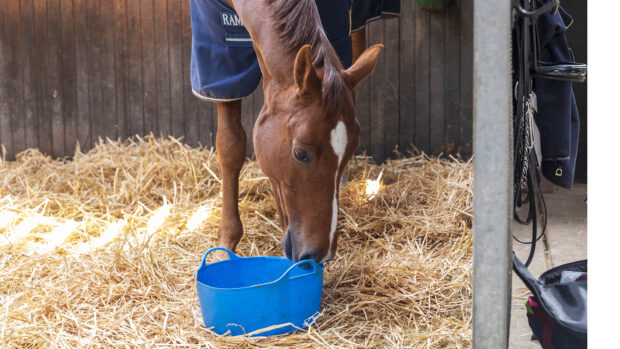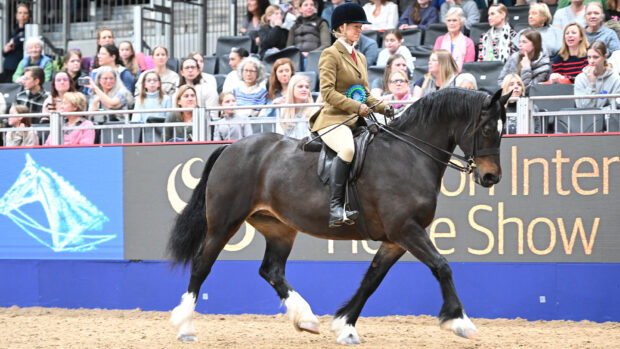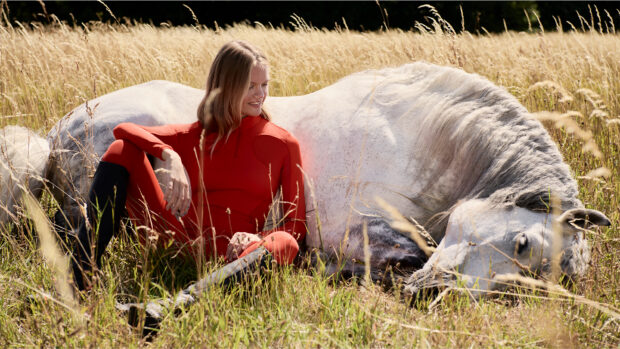Aggression in dogs is a topic that really does have no end. There are many types of aggression and the causes vary from being denied food, to being attacked on the lead or situations occurring during the puppy fear period stage. The way we treat, rehabilitate and understand different types of aggression in dogs is constantly evolving as more is learnt through the study of dogs.
Common types of aggression in dogs
- Fear aggression
- Learned aggression
- Trained aggression
- Maternal agression
- Redirected aggression
- Defence aggression
- Play aggression
- Territorial aggression
- Resource guarding
- Medical aggression
- Alliance aggression
- Hormone aggression
- Same sex aggression
- Predatory aggression
- Group aggression
- Ritualised aggression
Fear aggression
This can be caused by a variety of triggers. Some dogs are naturally more anxious and fearful in the same way that some people are, and it can be passed on from their parents. If they are of this disposition it needs to be carefully managed and this form of aggression is easier to prevent than treat. Toy breeds and shepherding breeds can be more prone to it.
Fear aggression is a form of self-defence, whether it is against people, objects, or loud noises. Dogs are in a position where they freeze, fight or take flight and physical factors play a big part in this. For example, if a dog is in pain or unwell or is getting older and their eyesight and hearing are deteriorating, your once placid dog can become a bit snappy as they don’t want to be hurt or cannot move and react in a way that they used to.
Environmental factors can also cause fear, especially if they occur in pivotal growth periods – examples include overcrowding in puppy mills or violent environments.
Learned aggression
A great example of this behaviour is a dog growling or snapping to make another dog or person back away, which results in the thing that they dislike not taking place. This could be trimming their nails or having to be around other dogs that they are not comfortable with.
To overcome aggression towards a person, using the example of nail trimming, it is usually the nail clippers and not the person the aggression is aimed at. It is important to take things slowly and try using an alternative form of nail clipper. Stand your ground without being confrontational and redirect the behaviour to a positive association. This can be done by sticking a lick mat to the wall to keep them busy while trimming each nail, then give them another high value treat for every nail you manage to trim. If they learn to growl and snap in the presence of a dog or dogs they find unsettling, this will involve behaviour modification training and being the safe person for your dog whilst teaching a new coping mechanism.

Lick Mats | Amazon.co.uk
Use a lick mat to distract your dog and help form positive associations.
Trained aggression
Think police dogs and protection dogs here. This is a serious business and it should only be done by professionals for professionals. Sadly, we see all too much of this with people using dogs for criminal and undesirable purposes, such as dog fighting.
Maternal aggression
Most bitches who have whelped a litter in a domestic environment will behave differently towards other dogs in the household. Hierarchy often goes out the window and mothers will defend their puppies at all costs. Some bitches can be like this with people, too. Respect and space must be given during this critical time (the first three to four weeks of whelping). Make sure she is disturbed as little as possible and has access to her own area and toilet space.
Wild or stray dogs are usually more aggressive as they must protect puppies from external threats, other dogs, as well as managing to feed herself.
Redirected aggression
This occurs when a dog becomes overwhelmed or highly reactive to a trigger source it cannot get to, and so instead gets the nearest item or object available, which could be you. Sometimes it can be caused by frustration, being over excited or what we term ‘barrier aggression’. This occurs when there is something restricting the dog from doing what it wants to do (usually being on a lead) and so the frustration comes out as a bite as a way of releasing the energy.
It’s not always possible to remove the barrier and so instead you need to modify the behaviour. Being aware of what triggers your dog to lash out and remaining consistent is paramount in alleviating their stresses and helping them cope better when confronted with a trigger. This is something you should always seek professional help with as the repercussions are vast if you get it wrong.
Defence Aggression
This is remarkably like fear aggression, but it manifests itself when a dog is in a situation or place he dislikes. The vet clinic is an ideal example of defence aggression – the consulting room is enclosed and usually associated with feeling unwell or in pain, so the dog resorts to self-protect mode. The same can be said for grooming salons, too.
Dogs who struggle with this should have alternative approaches and arrangements in place, particularly those that bite if you try to put a muzzle on – they know the muzzle is associated with the vets and pain, hence the bite before the muzzle. Vet practices are now able to see the dog in outside areas or at home depending on the severity of the problem, but should it be a case of a dog needing to go in for further investigations, then sedation at home is usually key to achieving this.
When it comes to grooming, you need to desensitise the dog to whatever it dislikes by using positive connections, such as lick mats or working on a bit of the body at a time while then giving them respite in between. I’ve found that, over a period of time, dogs adapt and come round to being groomed. They may not like it, but they will tolerate it if positive connotations and patience are adhered to. In some cases, mobile groomers may be a better bet as the dog is likely to be more comfortable in their home environment.
Play aggression
We all enjoy seeing our dogs rough and tumble with their friends, however, play can sometimes escalate if it’s not monitored and the dogs get over excited or if one has had enough and the other will not take no for an answer. When I watch dogs play fighting, I listen to the tone of the growling and barking, and watch the body language to see if the other dog is feeling overwhelmed.
I think of it on a scale basis of one to 10, with 10 being the highest. Never let it escalate above a five – that way you’re less likely to have a fight on your hands. Do this by making them have time out from play or engaging them in another form of activity.
Territorial aggression
Fence guarding, property guarding, people guarding and car guarding are normally related to a dog who is insecure and anxious, particularly in respect of the car and people.
Fence guarding is perfectly normal (although slightly irritating) as it is a dog’s way of communicating that they live here and this is their safe space. Therefore, any perceived threats can be met with lots of horrendous noise and teeth baring at the trigger behind the fence. What is most annoying is that if the fence was not there, then there would be no issue in 90% of cases.
Resource guarding
Although similar to territorial aggression, resource guarding differs in that the dog can actively snap at you if it feels you’re going to remove something or the dog itself from where they are comfortable. Resource guarding is more common in some breeds than others – and is quite prolific in cocker spaniels. It can be food, beds, sofa, toys or people.
This behaviour must be corrected as soon as possible , but the treatment is vastly different depending on the circumstances of the dog. Punishment and telling off is not the way – instead you should be firm and redirect positively with alternatives. Resource guarding is a big issue for most rescue dogs as they have gone from being kennelled to a warm, comfortable house with luxuries they never dreamt of and a person who loves them dearly. If they feel threatened with this being taken away, resource guarding can occur.
Medical aggression
This is a dog’s way of alerting you to a problem that may not be obvious to the naked eye – for example, thyroid issues or tooth pain. Underlying health issues, such as lymphoma, can make a dog feel extremely unwell and the only way of knowing this can be through a behaviour change. It is one of the first things to get checked out if your dog’s behaviour changes.
You can have the knock-on effect of drug induced aggression, also known as latrogenic aggression. Prednisolone is a good example of a drug that can cause this – it’s a steroid and can cause appetite changes, increased thirst, urination and irritability.
Alliance aggression
Even professionals like me have these issues – and I most certainly do with two of my dogs. The pair of them are an absolute nightmare for fighting over me when I arrive home, particularly in doorways when rushing to greet me. If my husband is at home, he either lets them out into the garden so there is plenty of space or asks them to wait until I come in. If no one is home and I hear or see them barking at the back door, I turn around and go back to the car. If I continue to go through the gate, it raises the energy to another level and then they start biting each other’s necks. I will repeat going back to the car several times if necessary until they have got their act together – and only then will I go through the door once they have backed up and given me space.
Hormone aggression
Similarly related and usually caused by puberty or males competing for a bitch in heat. This is a phase that needs careful management, until such time as the dog has matured or has been taught remodification behaviour or if it is old enough to be neutered. Sometimes chemical castration can be effective prior to physical removal.
If you have a bitch who is governed by her hormones just before her heat and after her heat, then depending on the behaviour exhibited it should be managed accordingly. I will keep Gloria away from most things before her heat starts and at the beginning of it as she is extremely irritable and snappy, likewise after her heat as she has a phantom pregnancy as do most bitches, the levels of which obviously vary from bitch to bitch.
Same sex aggression
This can happen between two females or males living together, and is most commonly seen in litter siblings or dogs that have not been neutered. It can escalate quickly to the point that it becomes impossible for them to share the same environment, but it can also happen after many years of living together quite peacefully. The conflict could be caused by hormones, resource guarding or barrier frustration – either way, if it’s not dealt with correctly and more fights ensue, the likelihood of them being able to live together harmoniously reduces.
Predatory aggression
Any dog can have this issue. I once worked with a Patterdale who used to chase anything with a fluffy tail (large or small) and then latch on and lock – this was not particularly sensible when she did it to German Shepherd. But most of the time a larger dog will stalk a smaller dog as they see it as prey.
What makes it worse is if the dog being chased makes squeaking noises as this only adds to the excitement as it sounds like prey dying. If you have a dog like this then it is always a good idea to remove squeaky toys. To manage predatory agression, it is better to stop it before it starts. The signals are obvious and it can be managed by tuning in to the dog’s needs. Lure toys on the end of a long-line are fabulous for this purpose. This way you fulfil their genetic disposition but in a controlled way.

Tug-E-Nuff Chase Toy
The bite area is made of quality and soft faux fur for your dog to bite, pull, chase or play with it.
Group aggression
This is more common with dog walkers or in daycare environments. One dog may begin an altercation or chase, and then other dogs join in. If the dog (or dogs) was on their own, they would not exhibit this behaviour. In circumstances like this, it’s most important that the environment and temperament of dogs being placed together is controlled and monitored. It’s not wise to place timid dogs with boisterous dogs for obvious reasons.
Ritualised aggression
This is a behaviour exhibited where nobody gets hurt. It’s a form of communication using growls, stares and stances as a way of avoiding confrontation. We have all heard people comment on dogs saying they are aggressive, but in actual fact it could be the opposite and we do not understand the communication the dog is trying to portray. The behaviour is displayed to prevent harm, not inflict it.
You might also like:

Signs, causes and coping strategies for reactivity in dogs – explained by an expert

How do you know if your dog is happy? Canine behaviour expert explains

Where to start when it comes to training a dog

Why does my dog stare at me? An expert explains

How to help an anxious dog

Subscribe to Horse & Hound magazine today – and enjoy unlimited website access all year round
Horse & Hound magazine, out every Thursday, is packed with all the latest news and reports, as well as interviews, specials, nostalgia, vet and training advice. Find how you can enjoy the magazine delivered to your door every week, plus options to upgrade your subscription to access our online service that brings you breaking news and reports as well as other benefits.





